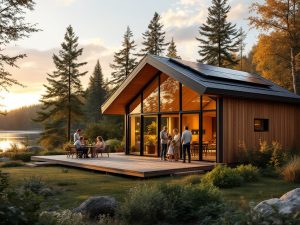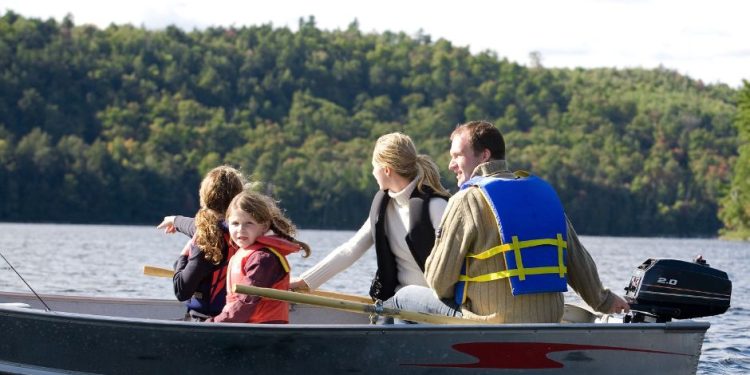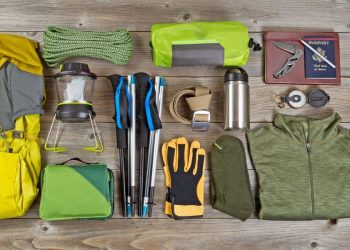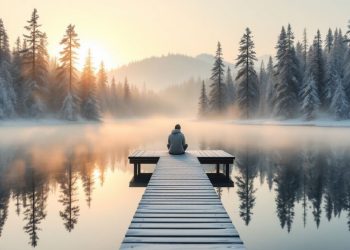“In a world moving increasingly faster, slowcation emerges as a counter-movement to speed culture,” states the European Journal of Modern Tourism (2024). This isn’t just another travel trend; it represents a fundamental shift in how we relate to leisure time in our increasingly accelerated world. Business Insider reports that luxury travel company Goway sees travelers adding an average of three extra days to their trips compared to pre-pandemic, while Scott Dunn’s “Summer 2024 Travel Report” reveals that 60% of American travelers are now actively planning their trips around slower, more conscious arrangements.
According to Booking.com’s “Sustainable Travel Report 2024,” 83% of global travelers consider sustainable travel important, with 76% specifically seeking experiences that let them “live like locals.” This shift in travelers’ mindset has created fertile ground for the slowcation movement to flourish.
Origin and Development of Slowcation
Slowcation has its roots in the Slow Food movement, which began in 1986 when Carlo Petrini protested against the opening of a McDonald’s near the Spanish Steps in Rome. This initial protest against fast food culture evolved into Cittaslow (Slow Cities) in 1999, and eventually into a broader philosophy encompassing slow travel. The movement represented not just resistance to fast food, but to what Petrini identified as the “stress virus” in modern society.
SmarterTravel notes that this evolution from food to travel wasn’t coincidental, explaining how “the same principles that made Slow Food revolutionary – appreciation of quality, respect for tradition, and emphasis on community – naturally transferred to how people approached travel.” The movement gained particular momentum during the pandemic when forced slowdown led many to reevaluate their relationship with time and place.
Definition of the Slowcation Experience
VAX Vacation Access defines slowcation as “the art of experiencing a destination rather than just visiting it.” This approach differs fundamentally from traditional tourism in several important ways. Instead of rushing through multiple destinations, travelers choose to stay longer in fewer places, allowing time for deeper connections and spontaneous discoveries.
6 Key Elements of Successful Slowcation Experiences:
- Extended stays in single locations (minimum 7-10 days)
- Focus on local experiences and cultural immersion
- Reduced environmental impact through conscious travel choices
- Meaningful cultural exchange with local communities
- Space for unplanned moments and natural discovery
- Integration with local daily rhythms and customs (RevitsUp)
The Nordic Connection
The slowcation philosophy finds its most natural expression in Nordic cultures, where concepts like hygge, lagom, and friluftsliv have long embodied principles of mindful living. Real Simple Magazine explores how these cultural values provide a perfect framework for understanding and implementing slow travel, particularly focusing on the Swedish concept of lagom as a guiding principle for balanced travel experiences.
Hygge and Travel
The Danish concept of hygge, which focuses on creating moments of cozy contentment and well-being, naturally harmonizes with slowcation principles. Booking.com’s report shows that 72% of travelers seek experiences that create a sense of comfort and belonging.
Lagom in Practice
Real Simple’s exploration of lagom in travel reveals how this Swedish principle of “just right” helps travelers avoid the common trap of over-planning. Their research shows that travelers who embrace lagom principles report 45% higher satisfaction with their travel experiences.
Friluftsliv
This Nordic tradition of outdoor life and nature connection adds another essential dimension to slowcation. Circular Connection reports that 68% of slow travelers incorporate significant outdoor experiences in their trips, regardless of weather conditions – making the Nordic resident a natural slow traveler.
Benefits of Slowing Down
When we give ourselves time to truly experience a place, something remarkable happens – we begin to notice details we would otherwise miss, hear stories we would have missed, and feel a connection to places and people that’s difficult to achieve during a hasty visit.
we begin to notice details we would otherwise miss, hear stories we would have missed, and feel a connection to places and people that’s difficult to achieve during a hasty visit.
Physical and Mental Well-being
There’s a reason we traditionally always took “summer rest.” Our bodies and minds need time to wind down, something today’s short weekend trips rarely allow for. Scott Dunn’s research shows that it takes an average of three days for a stressed traveler to truly relax. With the slowcation approach, we give ourselves this adjustment time, and the results are striking – 84% of travelers report significantly lower stress levels when they take time to travel slowly.
“It wasn’t until the fourth day that I stopped checking work emails,” shares a traveler in SmarterTravel’s survey. “After that, it was as if I experienced everything with new eyes. I started noticing the morning light over the fjord, the smell from the local bakery, the sound of birds at dusk.”
Natural Connection to Nordic Lifestyle
Particularly in the Nordic countries, there’s a natural understanding of the value of slowness. Swedish fika isn’t just about coffee and pastries – it’s about taking time. Danish hygge encourages us to create moments of mindful presence.
Nordic outdoor life teaches us that there’s no bad weather, only wrong clothing. This philosophy resonates strongly with modern travelers – according to Booking.com’s report, 76% of travelers actively seek experiences that let them “live like locals.”
Deeper Cultural Understanding
When we stay longer in one place, we naturally move beyond tourist areas. We find that local café where regulars gather every morning. We learn some words in the local language, start understanding the unwritten rules, become recognized at the local store. In fact, 91% of slower travelers develop meaningful relationships with locals, according to Circular Connection’s study.
Truly Sustainable Travel
The environmental benefits of slower travel come naturally. When we’re not rushing from place to place, our transportation needs decrease. We begin to discover the joy of walking through a new city instead of taking taxis. We shop at local markets instead of tourist shops. RevitUp’s analysis shows that 82% of slow travelers actively support local businesses, creating a more sustainable tourist economy.
Lasting Memories
Perhaps the most striking aspect of slowcation is how the experiences stay with us. When the European Journal of Modern Tourism followed up with travelers a year after their trips, it was the slow journeys that created the most vivid memories. Perhaps this isn’t so surprising – after all, it’s in the unplanned moments, in the small everyday encounters, that a destination’s soul truly reveals itself.
By giving ourselves time to fully experience a place, we not only create better travel experiences – we also contribute to a more sustainable and meaningful form of tourism that enriches both travelers and destinations.

Future Outlook: 2025 and Beyond
Circular Connections’ latest research indicates several emerging trends:
- Integration of digital disconnection periods
- Increase in multi-generational slow travel
- Focus on educational opportunities
- Growth in rural destinations
As we move toward 2025, slowcation represents more than just a travel trend. As the European Journal of Modern Tourism notes, it offers a blueprint for more meaningful, sustainable, and enriching travel experiences. By embracing Nordic principles for mindful living and slow travel, we can transform our vacations from exhausting tourist marathons into genuine opportunities for rest, connection, and discovery. Travel slow, experience more.







 STS
STS






